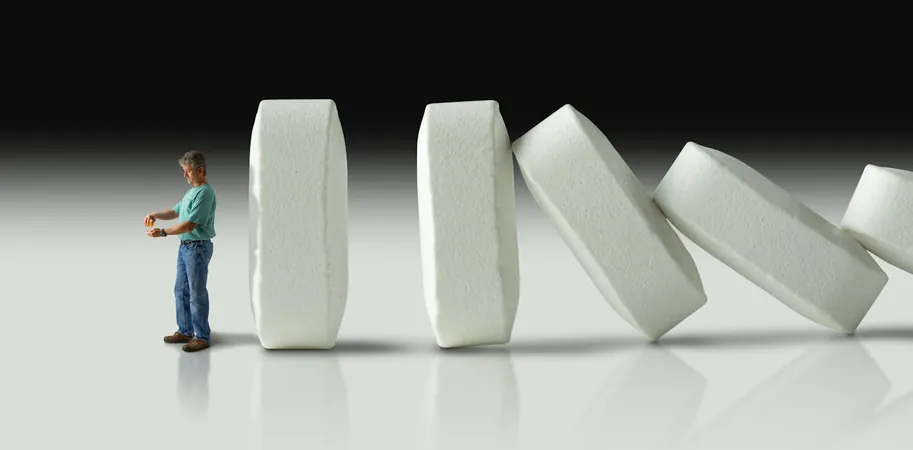
Groundbreaking Discovery: Sharp Transition Unveiled at Yellowstone's Magma Reservoir!
2025-04-28
Author: William
Have you ever marveled at the beautiful landscapes of Yellowstone National Park and wondered about the magma lurking beneath? A recent scientific breakthrough has uncovered new insights into the depth and characteristics of the ancient magma reservoir hiding under the iconic caldera.
Utilizing a combination of advanced seismic imaging and a massive vibrating truck—essentially creating mini earthquakes—researchers from Rice University embarked on a mission during the summer of 2020. This unique approach allowed them to map the subterranean secrets of Yellowstone without disturbing park visitors.
As seismologists deployed hundreds of temporary sensors across the park, the vibrations from the truck helped reveal the hidden magma depths. The big question? How deep does this magma lie? The revelations, recently published in the prestigious journal *Nature*, indicate that the top of the magma chamber rests sharply at approximately 3.8 kilometers (2.4 miles) beneath the northeastern caldera.
But that's not all; the scientists discovered that this boundary is remarkably thin—less than 100 meters thick! Additionally, they analyzed the types of fluids present and determined that the magma reservoir is not just a simple mixture but a complex cocktail containing supercritical fluid bubbles along with solid mineral crystals. This three-part composition challenges previous assumptions and aligns with geochemical models suggesting bubbling might occur at such depths.
While you might think that bubbling magma spells disaster, the study hints at a stable system. With about 14% fluid and an impressive 86% solid crystals, this configuration allows bubbles to move efficiently toward the surface, preventing alarming pressure buildup. As a result, Yellowstone’s magma system remains relatively stable, despite the bubbling beneath!
This groundbreaking research sheds light on the dynamic nature of Yellowstone's subterranean environment, showcasing its potential as a natural laboratory for volcanology. The findings not only enhance our understanding of this iconic park but could also offer valuable insights for monitoring volcanic activities around the globe.
As scientists continue to delve into the mysteries of Yellowstone, one thing is clear: beneath its surface lies a captivating world full of geological wonders waiting to be explored.









 Brasil (PT)
Brasil (PT)
 Canada (EN)
Canada (EN)
 Chile (ES)
Chile (ES)
 Česko (CS)
Česko (CS)
 대한민국 (KO)
대한민국 (KO)
 España (ES)
España (ES)
 France (FR)
France (FR)
 Hong Kong (EN)
Hong Kong (EN)
 Italia (IT)
Italia (IT)
 日本 (JA)
日本 (JA)
 Magyarország (HU)
Magyarország (HU)
 Norge (NO)
Norge (NO)
 Polska (PL)
Polska (PL)
 Schweiz (DE)
Schweiz (DE)
 Singapore (EN)
Singapore (EN)
 Sverige (SV)
Sverige (SV)
 Suomi (FI)
Suomi (FI)
 Türkiye (TR)
Türkiye (TR)
 الإمارات العربية المتحدة (AR)
الإمارات العربية المتحدة (AR)